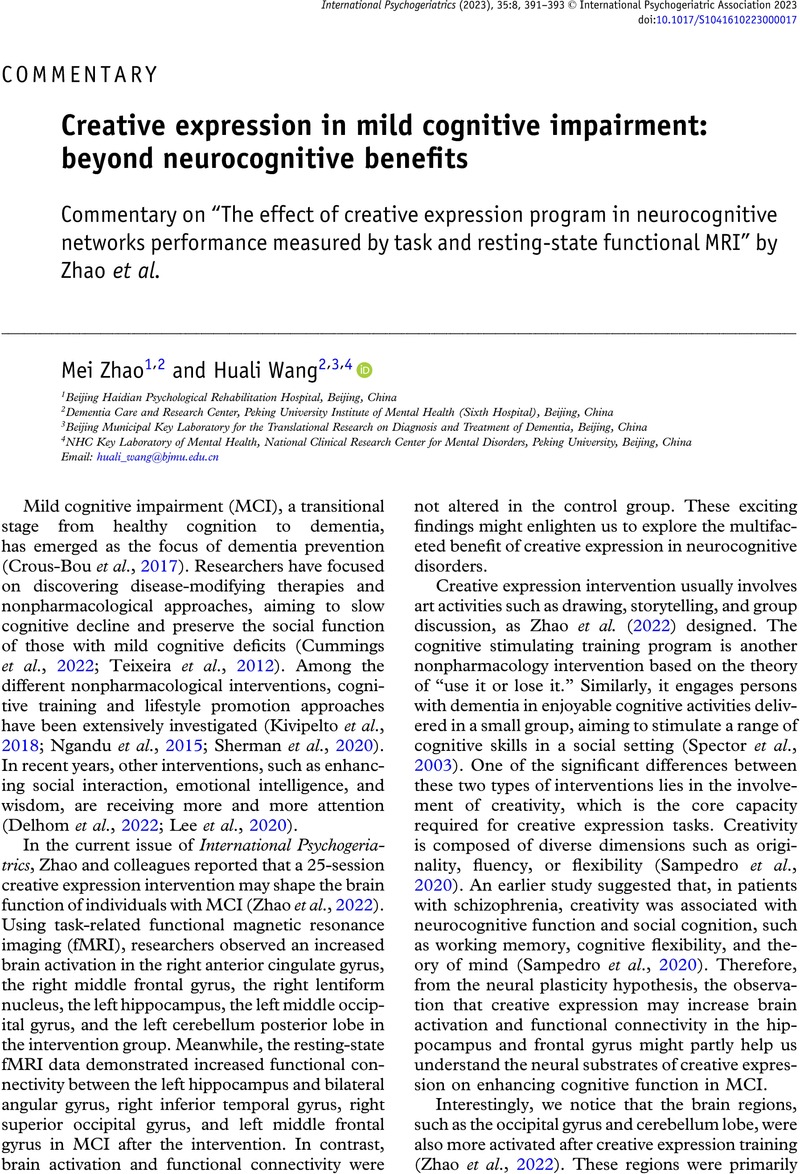No CrossRef data available.
Commentary on “The effect of creative expression program in neurocognitive networks performance measured by task and resting-state functional MRI” by Zhao et al.
Published online by Cambridge University Press: 18 January 2023
